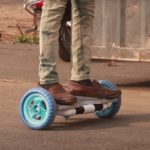While it is possible to make a DIY hoverboard using PVC at home, it is important to note that constructing a safe and functional hoverboard requires a significant amount of technical expertise and experience in engineering and electronics.
Hoverboards rely on a complex system of sensors, motors, and batteries to maintain stability and provide movement. Assembling these components requires specialized knowledge and tools, as well as a deep understanding of electrical circuits and safety.
Using PVC as a building material may be possible for certain components, such as the frame or outer shell, but it would not be suitable for critical components such as the motors or battery housing, as PVC is not strong enough to handle the weight and stress of these parts.
In summary, while it may be possible to construct a DIY hoverboard using PVC, it is not recommended for those without extensive knowledge and experience in engineering and electronics. Additionally, proper safety precautions should always be taken when working with electrical components.
If you are looking for affordable SCH40 ASTM furniture-grade PVC fittings, check out 247garden.com or 247workshop.com

